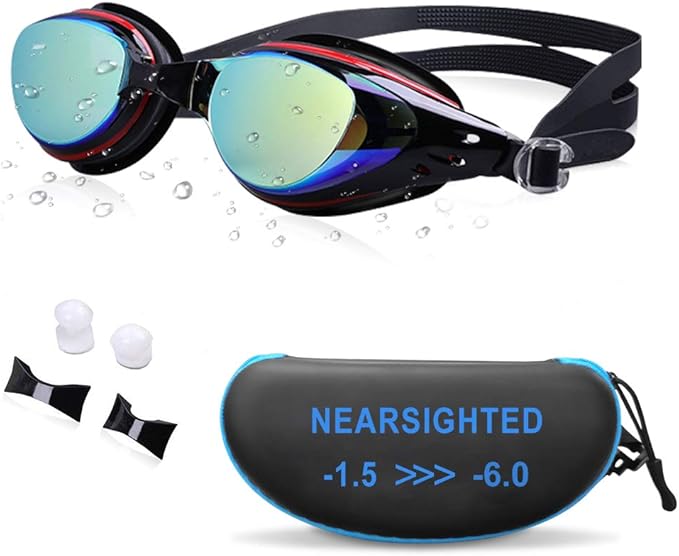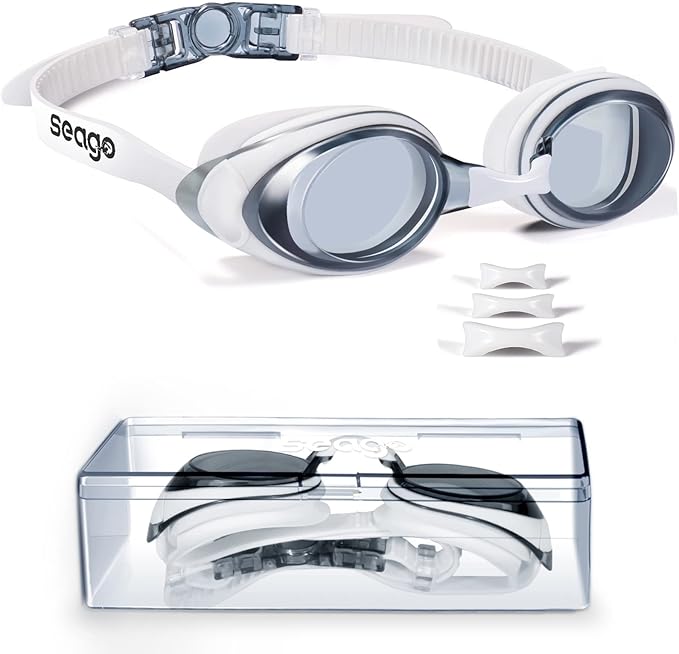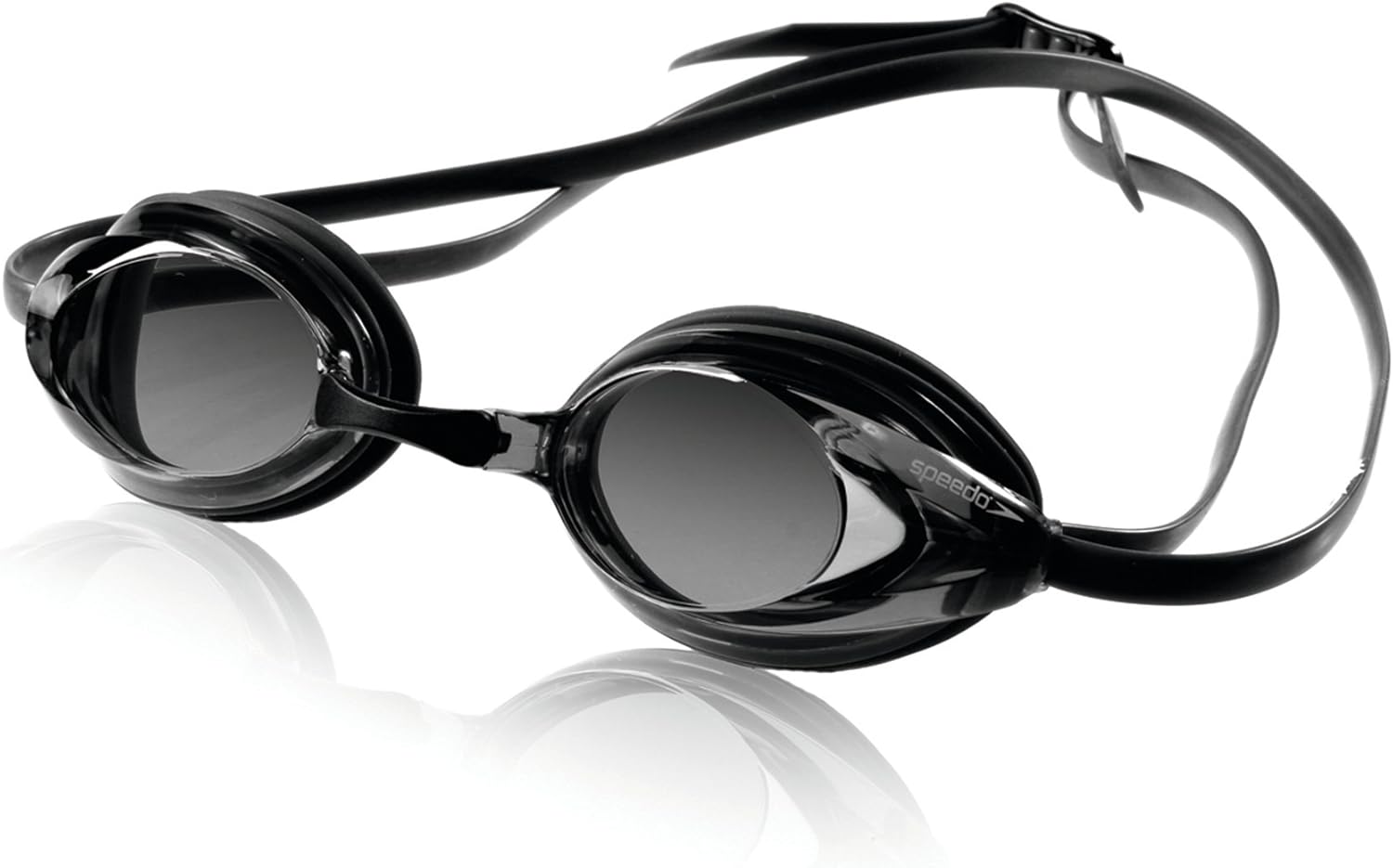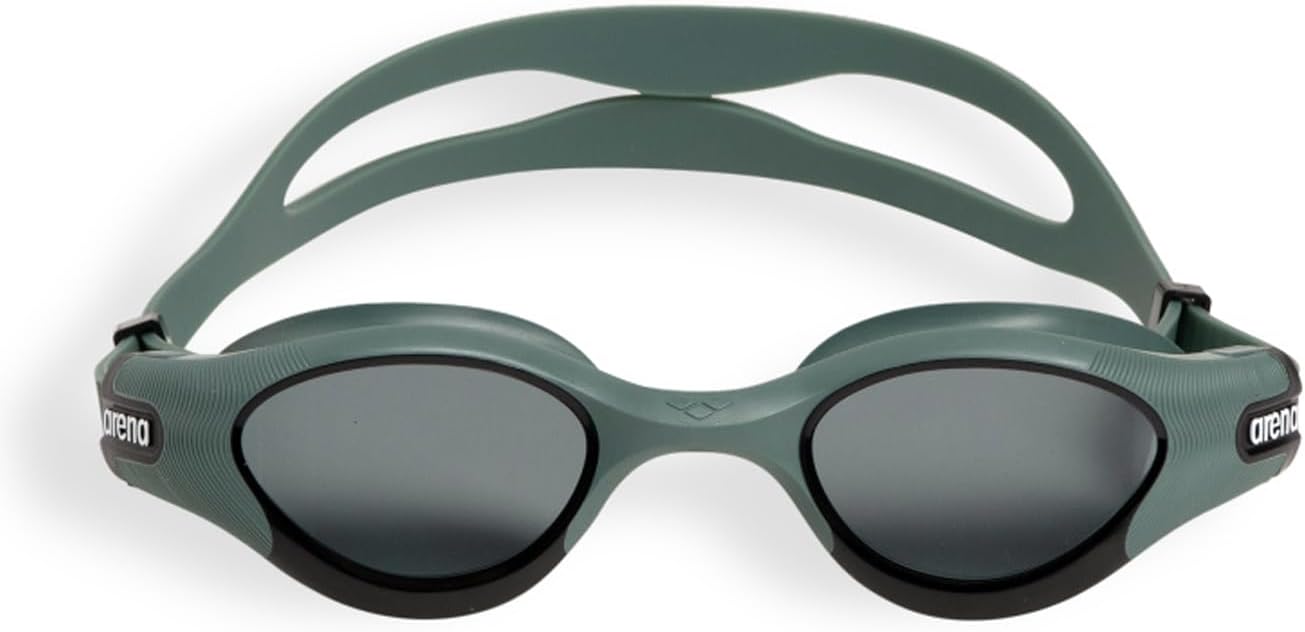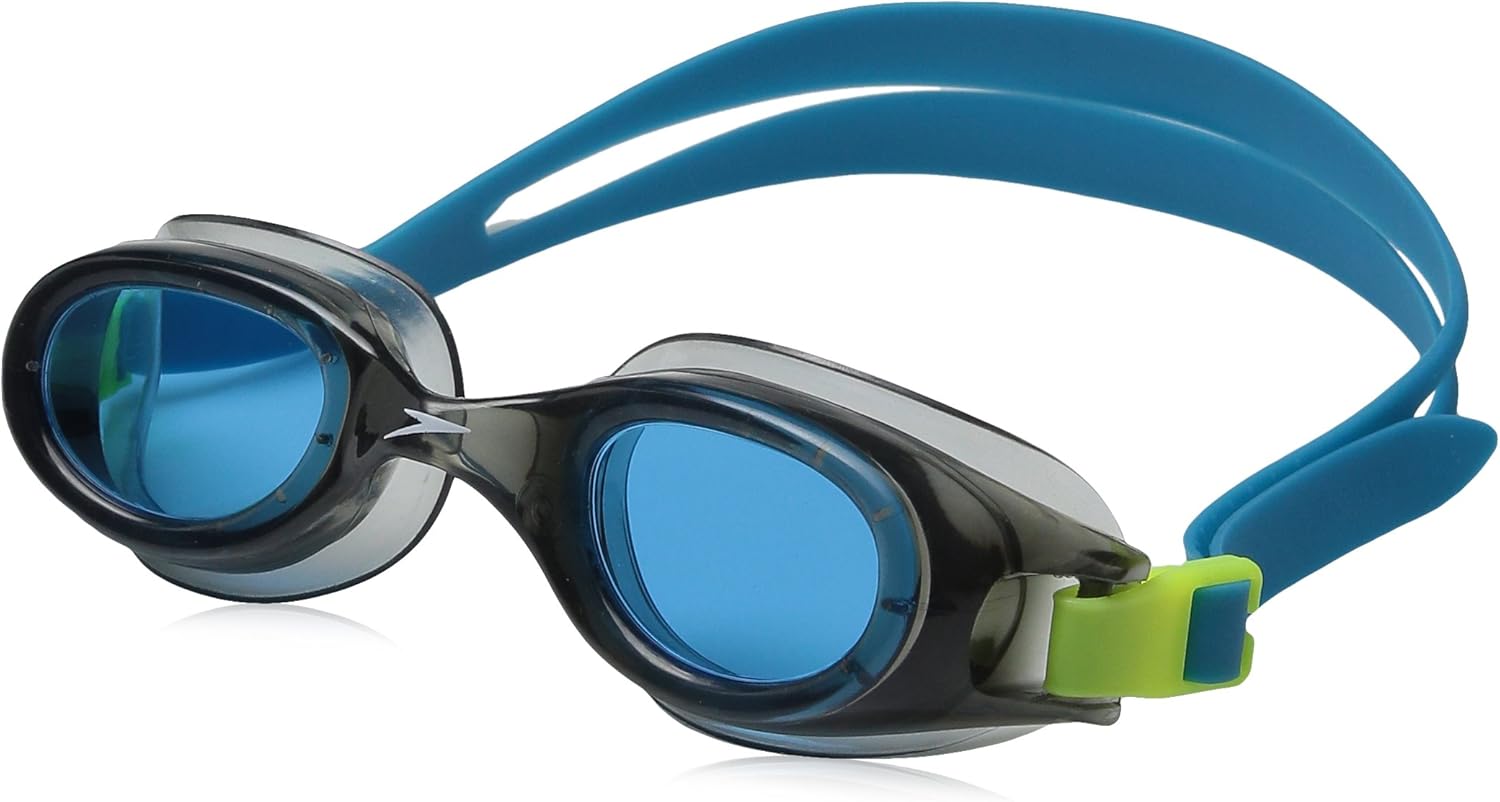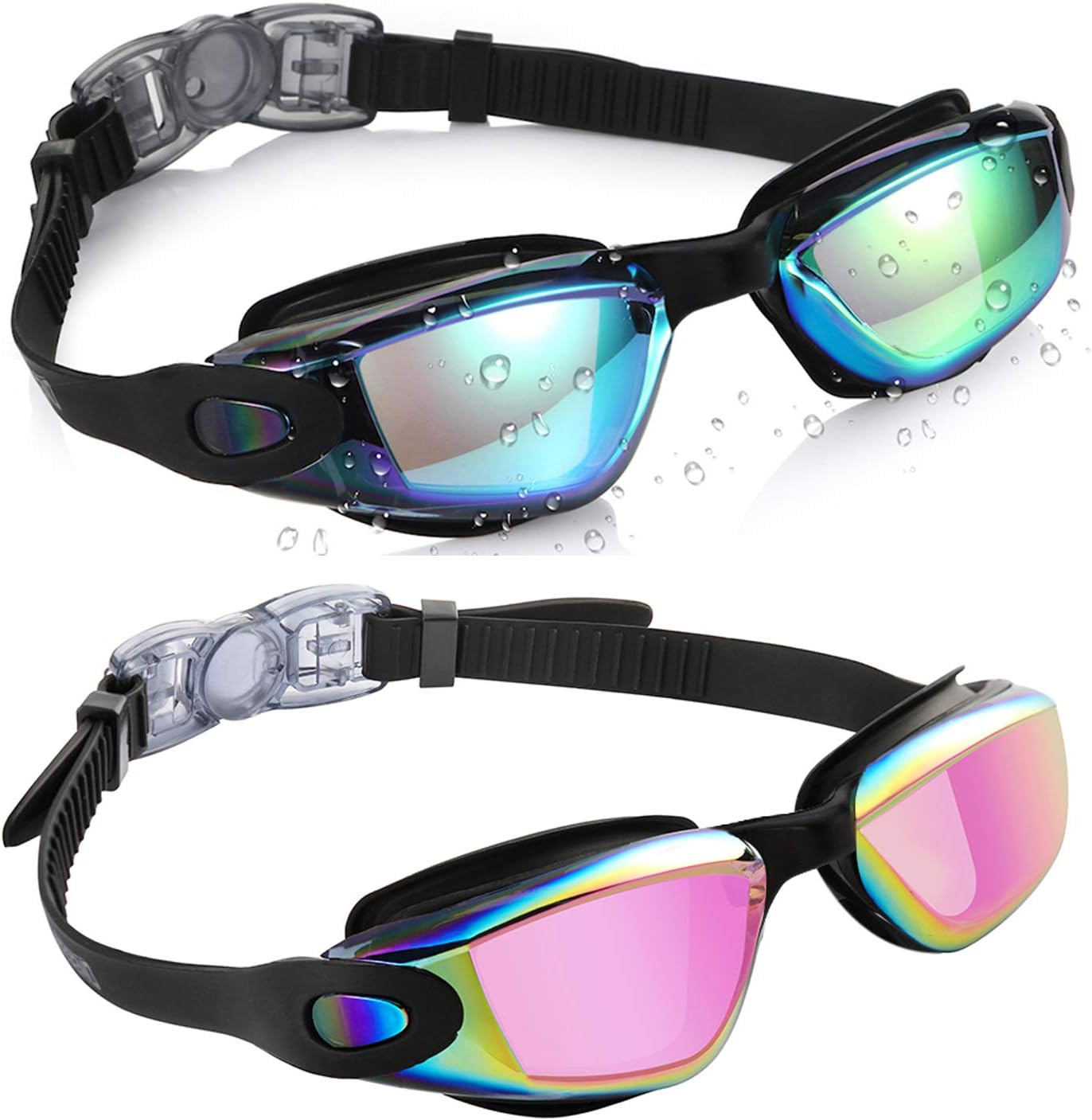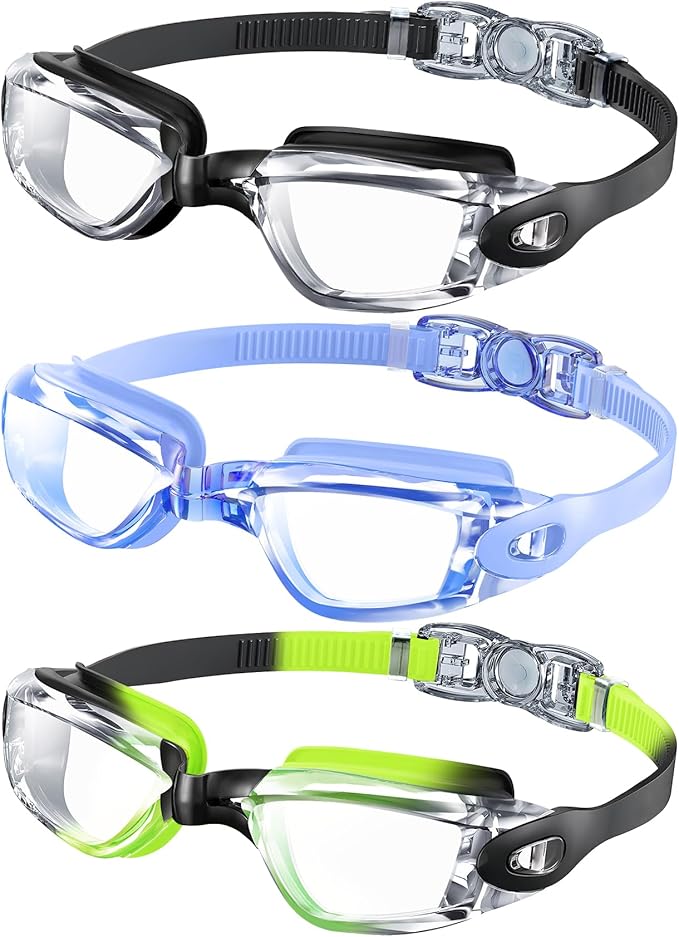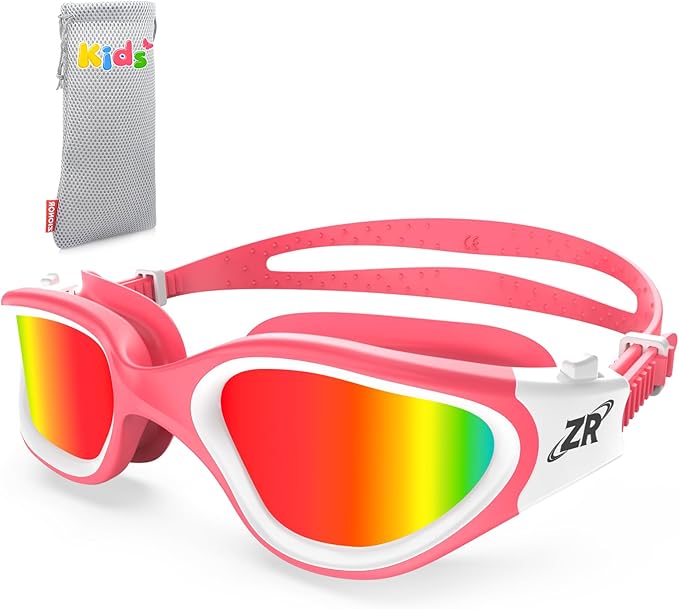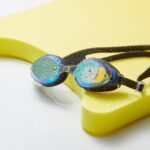How To Clean Swim Goggles the Right Way
How to clean swim goggles is one of those questions that sounds almost silly until you’ve been mid-lap, fog-blinded, bumping into the lane rope like an underpaid bumper car. Nothing humbles you faster than realizing your biggest opponent isn’t the clock, but your own cloudy lenses.
Let’s fix that.
Step-by-Step: How to Clean Swim Goggles Properly
Step 1: Rinse with Fresh, Lukewarm Water Immediately After Swimming
As soon as you’re done swimming, whether in a pool, lake, or ocean, rinse your goggles with clean, lukewarm tap water. This removes chlorine, salt, sweat, and sunscreen that cling to the lenses and straps. Avoid hot water, which can warp plastic or loosen seals.
Step 2: Do Not Rub the Inside of the Lenses
This rule is sacred. The inside of most goggles comes with an anti-fog coating, and the fastest way to destroy it is by rubbing. Even your fingers can leave tiny scratches that ruin clarity. Just swish them gently in the water instead.
Step 3: Shake Off Excess Water
Give your goggles a light shake to release droplets. Don’t wipe them with towels or shirts. Air drying is safer.
Step 4: Leave Them to Air-Dry Lens-Side Up
Place your goggles on a clean surface, lens-side up, and let them air-dry naturally. A well-ventilated space prevents mildew from forming on straps or gaskets.
Step 5: Store in a Hard Case
Once dry, tuck them into a protective case. Tossing goggles in a wet swim bag guarantees scratches and mold. The best swim goggles last much longer when stored properly.
That’s the core process. Quick, simple, and effective. But since swimmers are inventive creatures, let’s explore the bigger picture: what actually fogs them up, which hacks work, which ruin your gear, and how to tackle related problems without wasting money.
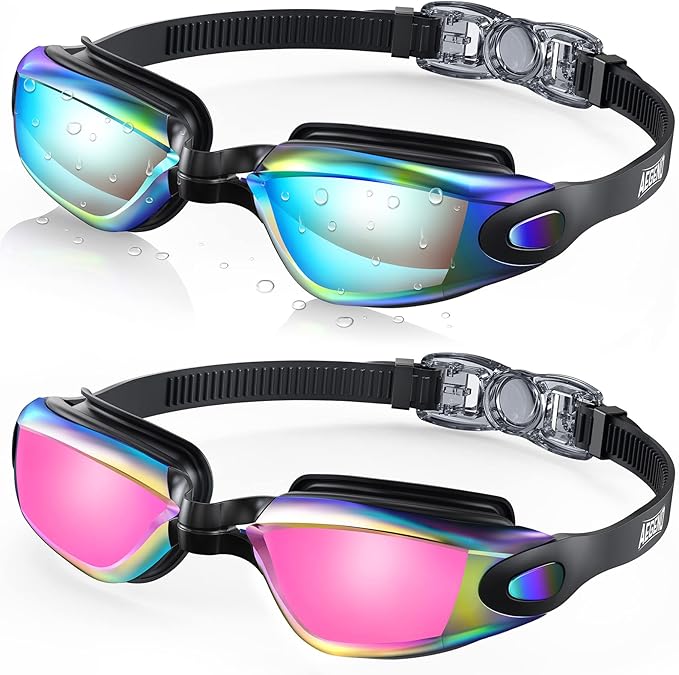
Why Do Goggles Fog in the First Place?
Fogging is the natural result of warm, humid air inside the goggles hitting the cooler lens surface. Think bathroom mirrors after a hot shower. The thin anti-fog coating on goggles is designed to break up condensation so water forms an invisible layer instead of fog droplets.
But that coating is delicate. Chlorine, oily sunscreens, or constant rubbing erode it. Once gone, no amount of wishful rinsing brings it back. That’s why careful handling matters more than aggressive cleaning.
|
|
|
|
How to Clean Foggy Swimming Goggles Without Ruining Them
If your lenses are already cloudy, don’t panic. Try these safe methods:
- Rinse and air-dry properly. Many times, foggy buildup comes from leftover chlorine or salt.
- Use an approved anti-fog spray. Brands like Speedo or Arena sell sprays that restore clarity. Spray lightly, rinse, and let them air-dry.
- Avoid rubbing with cloths. Even microfiber scratches anti-fog layers.
If fog returns instantly after every swim, it’s often a sign the anti-fog layer is gone for good and the goggles are nearing retirement.
RELATED: How to choose swimming goggles
Myths and Hacks: Toothpaste, Vinegar, and Beyond
You’ll find countless “hacks” online about restoring goggles. Some work, some destroy lenses. Let’s break them down.
How to Clean Swim Goggles with Toothpaste
Toothpaste contains mild abrasives. While it can remove stubborn residue on the outside of lenses, it also risks scratching plastic or wiping off the anti-fog on the inside. If you attempt this, use a non-gel, very mild paste, and apply only to the outer lens. Rinse thoroughly afterward.
How to Clean Swim Goggles with Vinegar
Vinegar works as a natural disinfectant and can dissolve mineral deposits from hard water. A weak solution (one part vinegar to four parts water) can be used for straps or the outside of lenses. But never soak the inner lens, since vinegar strips coatings.
In short: toothpaste and vinegar are “last resort” cleaners, not part of your regular routine.
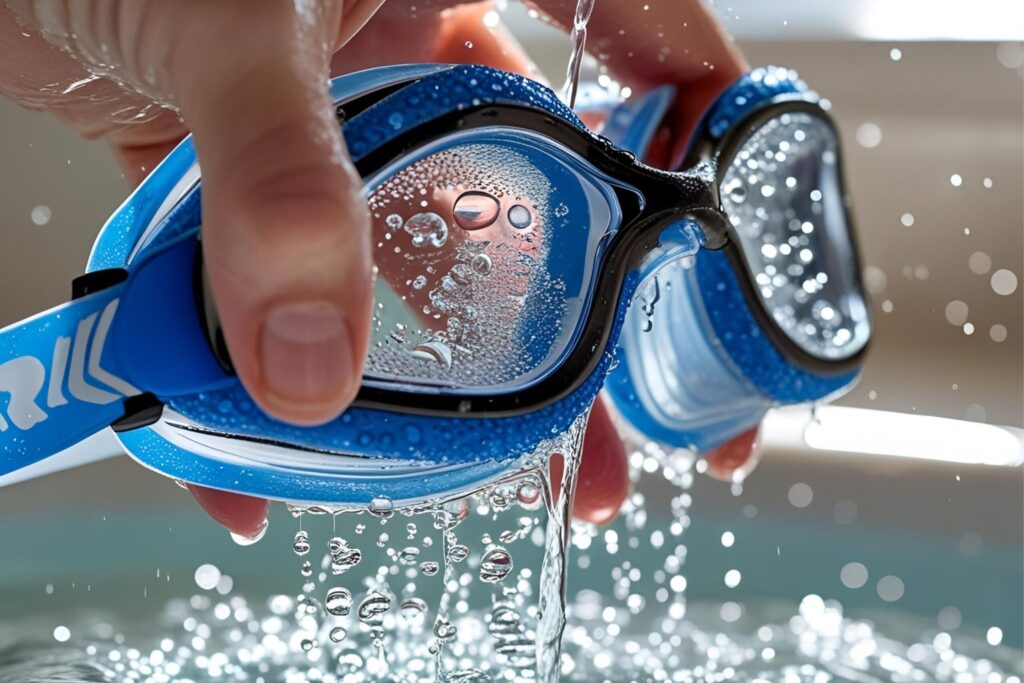
How to Clean Goggles Lens Safely
If you notice smudges or a greasy film:
- Rinse with lukewarm water.
- Swish gently, don’t rub.
- If residue persists, a drop of mild, non-abrasive dish soap on the outside only, followed by a thorough rinse, can help.
Never clean with harsh chemicals, alcohol-based wipes, or strong detergents. These will ruin the lenses faster than fog ever could.
How to Clean Anti-Fog Swimming Goggles
The phrase “anti-fog” makes swimmers think they’ll never deal with cloudy vision again. Unfortunately, anti-fog coatings wear down with use. To protect them:
- Avoid touching the inner surface.
- Stick to fresh water rinses.
- Reapply anti-fog drops as needed.
If the coating is completely gone, you can restore some clarity with sprays, but eventually, replacement is the only permanent solution.
Cleaning Goggles Straps and Gaskets
The lens is delicate, but straps and gaskets are sturdier. Sweat, sunscreen, and chlorine often build up here, leading to bad smells or mildew. Once a week:
- Fill a bowl with lukewarm water and a drop of mild soap.
- Dip the straps and gaskets only.
- Rinse thoroughly and air dry.
This prevents odors and cracking, keeping goggles comfortable longer.
How to Clean Speedo Goggles
Speedo, one of the most recognized brands, offers specific care advice:
- Always rinse with fresh water after swimming.
- Store in a ventilated case, not in a closed, wet bag.
- Use only Speedo’s approved anti-fog sprays for re-coating.
Other brands like Arena and TYR recommend similar steps, but always check the manufacturer’s guide for your model.
How to Loosen Speedo Goggles
A different but common frustration is overly tight straps. Over-tightening causes leaks, discomfort, and headaches. To loosen:
- Pull gently on the strap adjustment clip located at the side.
- Adjust evenly on both sides for balance.
- The seal should be snug but not painful. Remember: suction, not pressure, keeps goggles watertight.
Different Types of Swimming Goggles and Their Care Needs
|
|
|
|
Not all goggles are created equal, and care varies slightly:
- Training goggles: Durable, daily-use goggles with standard anti-fog coatings. Handle gently to preserve coating.
- Competition goggles: Sleek and mirrored, often with thinner seals. Store carefully to avoid scratches.
- Recreational goggles: More comfortable but less protective coatings. Clean gently, but expect shorter lifespan.
- Prescription goggles: Extra care needed, since lenses are pricier to replace. Avoid all abrasive cleaning.
- Smart goggles: Contain electronics, so avoid soaking entirely. Follow brand instructions strictly.
Check Also: Best water weights for pool exercise
FAQs on How to Clean Swim Goggles
How often should I clean my goggles?
Every time you swim, rinse and air-dry. A deeper strap cleaning once a week is great.
How long do goggles last?
With good care, 6 months to a year of regular use. Frequent swimmers may need replacements sooner, especially once the anti-fog coating is gone.
Can I use baby shampoo instead of anti-fog spray?
Some swimmers use diluted baby shampoo as a cheap anti-fog solution. While gentler than toothpaste or vinegar, it can still leave residue if not rinsed thoroughly.
Can I prevent scratches altogether?
Not entirely. But storing goggles in a hard case and never wiping the inside goes a long way.
What about saltwater or open water swimming?
Always rinse thoroughly after saltwater swims. Salt crystals are harder on coatings than chlorine.
Storage Tips for Long-Lasting Goggles
- Use a hard-shell case, not just a mesh bag.
- Keep them out of direct sunlight, which weakens silicone straps.
- Don’t leave them in hot cars; heat warps plastic.
These small habits keep your goggles lasting far longer than the average pair.
A Note on Comfort and Fit
Many swimmers confuse leaks with cleanliness problems. In reality, poor fit is often to blame. Knowing how to wear swimming goggles correctly makes just as much difference as cleaning them. The straps should sit above your ears, not painfully tight, and the seal should “stick” lightly even without the strap in place.
The Bottom Line on How to Clean Swim Goggles
If you’ve been wondering how to clean swim goggles without ruining them, the answer is simple: gentle rinsing, no rubbing, careful drying, and proper storage. The temptation to scrub, wipe, or over-clean is what ruins them faster.
Yes, there are emergency tricks with toothpaste or vinegar, but those are more like last-ditch efforts than everyday solutions. Respect the anti-fog coating, keep straps fresh, and store your gear properly.
Good goggles are a swimmer’s best friend. Whether you’re in a race, enjoying casual laps, or heading into water sports adventures, clear vision is the difference between smooth strokes and crashing into the lane rope again.
Take care of your goggles, and they’ll take care of your eyes.
